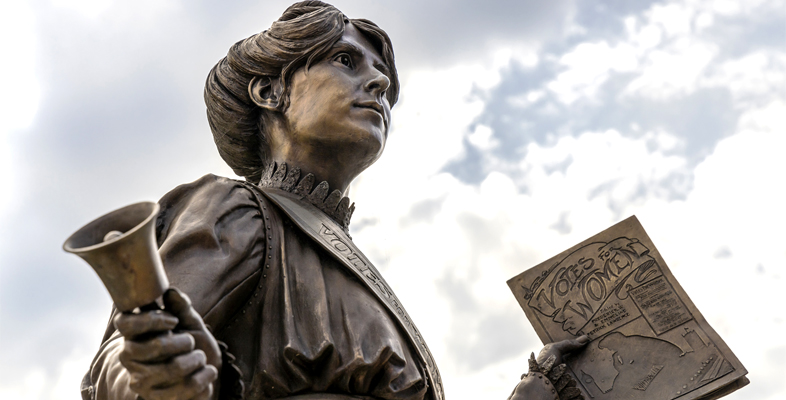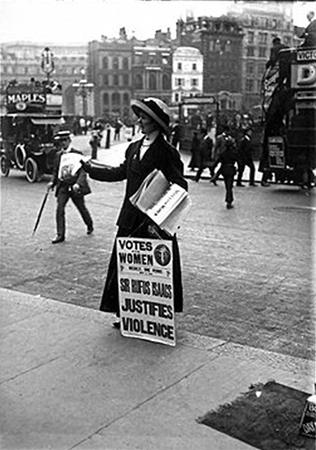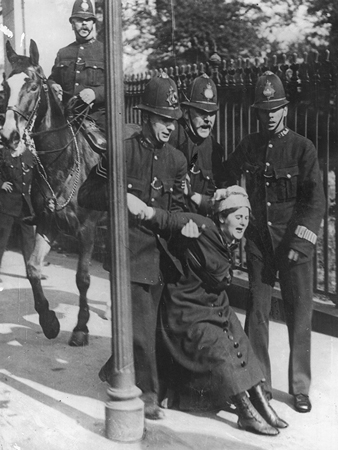5.1 Different types of action
The WSPU was engaged in a range of activities, not all of which involved law breaking. These included the usual campaigning activities of:
- holding public meetings
- making speeches
- writing articles, pamphlets and books.
One of the WSPU’s most successful endeavours was the weekly newspaper Votes for Women, which members worked tirelessly to sell across the country. They would walk the streets (see Figure 6), dressed in the WSPU colours of purple, white and green, carrying a poster and, if necessary, standing in the gutter, because they could be arrested for causing an obstruction if they stood on the pavement.
But of course, the WSPU did more than this. One favourite tactic was for a protester to chain herself to the railings of a government building and deliver a speech to the passers-by for as long as possible before the police managed to cut her free and arrest her (see Figure 7). Another tactic was the smashing of windows of government and commercial properties – even 10 Downing Street was subjected to this treatment.
In the terminology of the WSPU, the group was engaged in a military campaign and medals were awarded to members who served time in prison. At any one time, the women’s jail at Holloway could have hundreds of suffragettes within its walls. The leaders Emmeline, Christabel and Sylvia Pankhurst all served multiple prison sentences.


